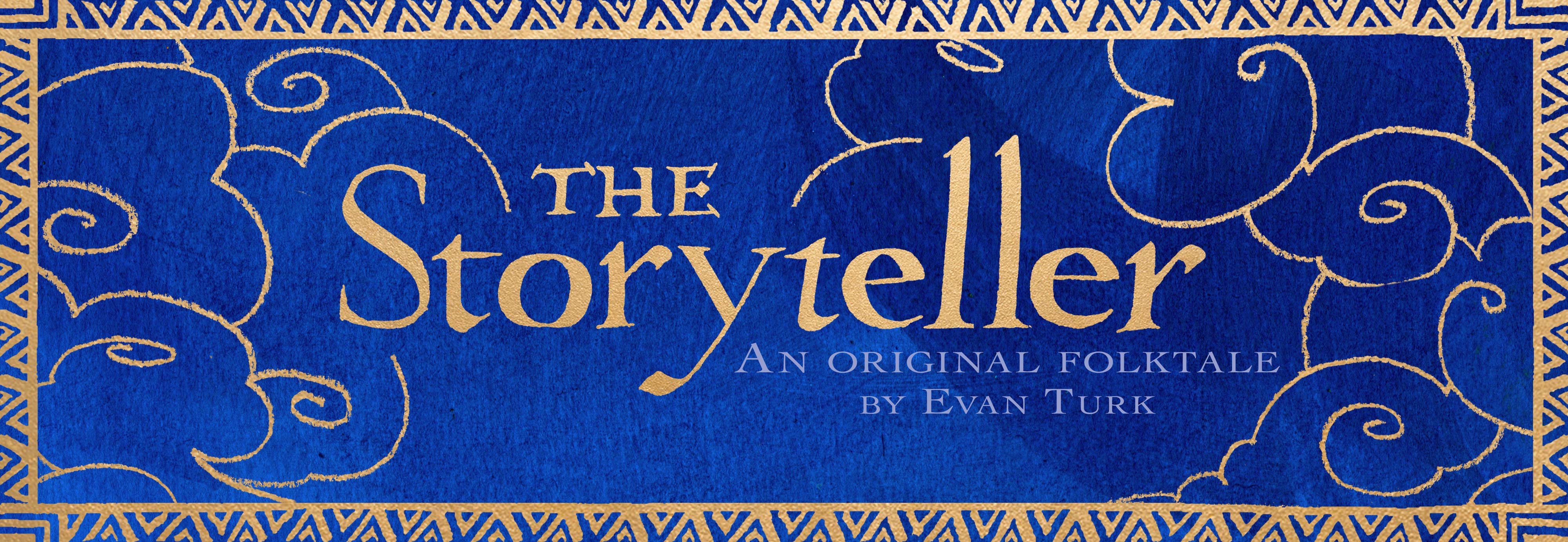Carpets and Borders: Look for Blue Glimmer of Hope
The borders and patterns of The Storyteller (Atheneum Books for Young Readers) have much to say about the stories themselves, and all come from traditional Moroccan carpet patterns.
Elizabeth Bird of School Library Journal follows the diamonds in The Storyteller in an article for Fuse 8 Production.
“Look for a blue glimmer of hope to appear around each story!” —Evan Turk
“…after each story’s text a diamond appears. However, as the stories appear within stories within stories, the diamonds grow more elaborate and decorative. Then, as the stories end one by one, the diamonds simplify once more.
I began searching the art for more diamonds and here Turk doesn’t disappoint. If you look closely at the borders of the book, you see that the diamonds appear when there is hope and fade from blue to brown diamonds when hope dries up. As the storytelling increases the borders fill in more and more blue, just as the townspeople fill their fountains with bowl after bowl of water. Point out to a child reader the diamond motif and you are sure to be surprised by all that they find hidden in these pages.”
—Elizabeth Bird, School Library Journal
Beyond the borders filling with blue as the stories progress, there is even more to look at!
Each story has its own border in its own color:
The Sandstorm and the Storyteller: Golden Yellow (turning indigo blue)
The Endless Drought: Green
The Glorious Blue Water Bird: Brown
The Miraculous Yarn: Black
The four colors are very common in Moroccan arts, and have been related to the life cycle of a ripening date (a common fruit from date palm trees around Morocco). The fruits begin green, turn yellow, then to brown, then to black. The colors are also mentioned in association with the colors of “henna”, which is used to decorate Amazigh bride’s skin in traditional wedding ceremonies. The leaves of the henna plant and the paste they make are green. When the paste is applied, it stains the skin black, then fades to reddish brown, then finally to yellow.
(Read more about the symbolism of Moroccan carpets in the article Amazigh Textiles and Dress in Morocco: Metaphors of Motherhood by Cynthia Becker)
Each pattern is taken from traditional Moroccan carpets, as are the patterns seen on carpets throughout the book. In the image at the top of this post, you can see several different stylized types of carpets from the Atlas region. See if you can spot them in the image!
(Images from Jemaia Tifawin: Weavers of the village of Anzal)
Patterns in Moroccan carpets can mean different things to different regions of weavers, and different things to each individual weaver. The meanings of the symbols also can change over generations, so there is no one “true” meaning that applies to a symbol universally.
The diamond/lozenge pattern can symbolize fertility and the womb. It can also be a symbol of protection against the “evil eye.”
The chevron pattern can also symbolize female fertility. The story of the boy and the storyteller is all about the creation of stories and their ability to protect. The nested tales in The Storyteller all center around women and creation.
 The zig zag pattern can symbolize a snake, an arrow, and male energy, and is often around the border of a carpet, with female symbols (like the female stories in the book) in the center.
The zig zag pattern can symbolize a snake, an arrow, and male energy, and is often around the border of a carpet, with female symbols (like the female stories in the book) in the center.
The triangle pattern can symbolize a snake or male energy, and is also mostly found around the borders, surrounding female symbols.
 The diamond/lozenge with hooked corners is sometimes called the “spider” (a symbol related to weaving) and can symbolize creation and birth, like the story of the escaped princess.
The diamond/lozenge with hooked corners is sometimes called the “spider” (a symbol related to weaving) and can symbolize creation and birth, like the story of the escaped princess.














